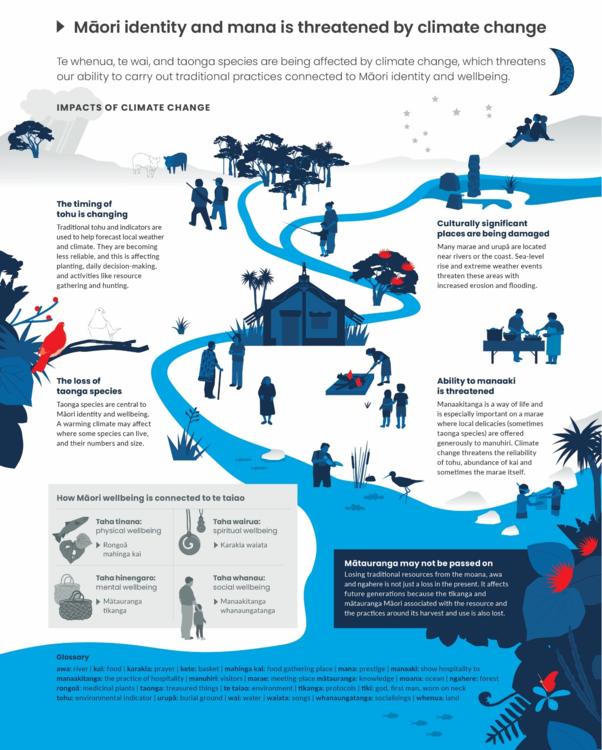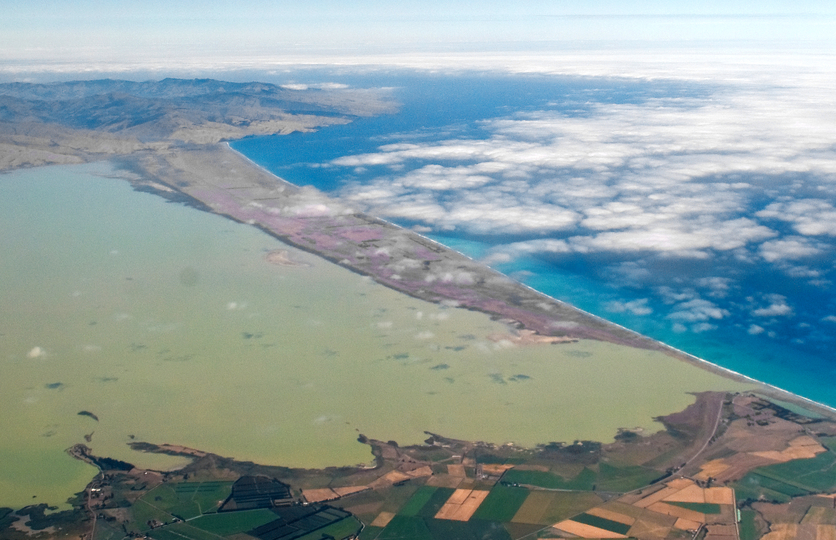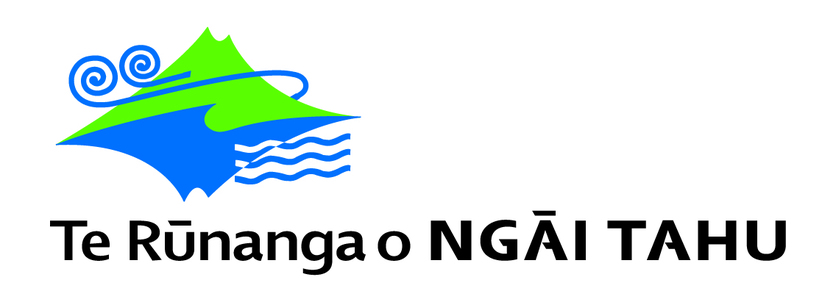Mahika/mahinga kai is a highly significant concept for Māori. It encompasses the values and protection of natural resources and is specific to iwi and their rohe. The term ‘mahinga kai‘ can mean ‘to work the food’. This relates to not just the gathering of kai but also the ecosystems and habitats these species are found in. It includes the intergenerational practices and tikanga used to produce, harvest and protect them.
Mahinga kai is about survival, about prosperity. It’s about relationships. It’s central to who we are as Ngāi Tahu.
Te Marino Lenihan (Ngāi Tūāhuriri, Ngāti Huirapa, Waitaha Ngāti Māmoe, Ngāi Tahu)
Being able to gather kai is about survival – being able to put food on the table. The skills and technology to do this effectively have allowed iwi to thrive while caring for natural environments. As well as this, the ability to collect resources affects the mana of an iwi or hapū as they contribute to their capacity for manaakitanga through the offering of food from their whenua and wai to manuhiri.
Mahinga kai connects people with place, tangata with whenua
There are many species associated with mahinga kai. Tuna, kōura and īnanka are some of the better known, but species like the tī kōuka (cabbage tree) and types of hekaheka (fungi) have also played important roles in providing sustenance for people and culture.
Ka hāhā te tuna ki te roto, ka hāhā te reo ki te kāika, ka hāhā te takata ki te whenua.
If there’s no tuna in the lake, there’ll be no language resounding in the house, there’ll be no people on the land. If the tuna are plentiful, you’ll hear the language, and you’ll see the people.
Charisma Rangipunga (Ngāi Tahu, Ngāti Kahungunu, Taranaki, Ngā Rauru)
The whakataukī above speaks to the connection between mahinga kai and people. It highlights the importance of species like the tuna, not just for providing nourishment but also in sustaining cultural practices and knowledge. For example, repo (wetlands) are reservoirs of mātauranga Māori and places of deep historical, economic and spiritual significance. Colonisation and raupatu, the confiscation of land from Māori, has had devastating effects on the ability of iwi to practise kaitiakitanga of mahinga kai sites.
Challenges for mahinga kai
Environmental degradation, land conversion and sedimentation have negatively impacted many mahinga kai areas. These changes include the pollution of waterways by faecal contamination, chemicals and algal blooms. One of the consequences of this pollution is that kai harvested from these areas can be toxic or contain pathogens. This means that kai species that have provided nutrition for many generations may now cause disease.
The current and ongoing effects of climate change are also providing major challenges to the protection of significant mahinga kai habitats. Climate change raises CO₂ levels and increases ocean acidification, which then has an impact on life forms such as pipi, pāua and kina – meaning that these key taonga species are going to be at more risk of dying out. Dr Shaun Awatere states that this will go on to have a significant impact on the ability of iwi and hapū to be able to manaaki, to care for their people and for manuhiri. For many iwi, their wellbeing is connected to the harvesting of natural resources such as kaimoana from coastal environments.
Commercial practices and overharvesting, such as with the toheroa and pāua, has resulted in some taonga species no longer present in places where they were once abundant.
Taking action for mahinga kai
Many iwi and conservation groups are providing management and protection of areas in ways that allow future generations to continue to access mahinga kai. Tools such as rāhui and rauiri can be used to support the recovery of these populations. Rauiri can involve organised access to particular sites or the reservation of certain food for a specific group such as kaumātua. Rāhui can be used as a prohibition placed on an area in order to allow the resource to recover. Many other sustainable practices are embedded in tikanga and te reo Māori. One example is the use of the phrase ‘tūpou pāua’, tūpou meaning to bend. Tame Malcolm shares how this refers to the harvesting of pāua that you could reach by bending over – if you had to dive, the population was too small to harvest.
Many scientists and organisations are working with iwi in order to ensure the survival of taonga mahinga kai species. Dr Jane Kitson focuses on growing an understanding of the kanakana (lamprey), a species we still have much to learn about. Dr Ian Kusabs researches the mātauranga connected to harvesting kōura and utilises this technology to effectively monitor kōura population numbers. Dr Kura Paul-Burke leads the Awhi Mai Awhi Atu project to re-establish kuku/kūtai/mussel beds in Ōhiwa Harbour. Amber McEwan has studied kākahi translocation.
Importantly, everyone can contribute to enhancing mahinga kai sites. Start by taking time to observe mahinga kai species in your local area and discover what used to live there. Reach out to mana whenua to find out about the local kupu Māori for species or if there are whakataukī connected to mahinga kai in your area. The Ake Ake model will support you to explore the past, present and future of mahinga kai in your local environment.
Taking action is an important part of supporting habitats and the species that live in them. Consider helping with water quality monitoring, pest tracking and management or planting riparian edges. Actions like this help to create an environment where mahinga kai habitats can be sustained and species can flourish.
Related content
Palaeo-ecology, archaeology and matāuranga Māori share philosophies of learning from the past. Could this lead to the resumption of traditional harvesting practices of some native species? Explore this further in the article Can customary harvesting of NZ’s native species be sustainable?
The articles Understanding kaitiakitanga and Waitī – freshwater environments includes some key aspects and examples of kaitiakitanga.
Many iwi groups are involved in kaitiakitanga around restoration in their rohe. To explore ways in which people are restoring streams to safeguard native fish, look at Stream works for fish, Planning for change, Planting stream edges and Iwi and kaimoana.
Discover the often forgotten importance of hekaheka in the article Māori knowledge and use of fungi.
Ngā ika a Tangaroa and Ngā manu a Tānemahuta provide brief introductions to Māori knowledge of kai moana and manu.
You can explore more on the ecology of mahinga kai habitats in the articles Human impact on estuaries and Resilience to stress.
The article Te ao Māori concepts within Kiwi Kai ❘ Ngā ariā o Te Ao Māori kei roto i te kēmu Kiwi Kai explores concepts such as mana atua, mauri and te mana o te taiao and actions we can take to support Papatūānuku.
Learn how kai species have potential for commercial innovation with the Project Mātauranga resource Investigating the native sea cucumber for export.
The Connected article Counting kākahi is one of several stories about mahinga kai and taonga species available to use in the classroom.
Useful links
Mahinga Kai Crusaders (School Journal Level 3 September 2014) features two men who are keeping the tikanga of mahinga kai alive. Teacher support material is included.
Do you have Kereru in your Kowhai? Tuna (eels) in your drain? This Kaunihera Taiao te Waitaha Environment Canterbury resource provides a range of links to support understanding about mahinga kai.
Watch Ōnuku Mahinga Kai, a series of videos that document several wānanga (traditional Māori learning environments) established to revitalise the knowledge of mahinga kai.
Te Tiaki Mahinga Kai contains a range of information on mahinga kai including What are Kai Species?
You can also learn about different mahinga kai species in the NIWA webpage Mahinga kai - what species interests you?
Maramataka expert Rereata Makiha discusses mahinga kai in this presentation to Te Wai Māori Freshwater Fisheries Conference 2019.
Lake stories is a collection of personal memories, cultural knowledge and scientific information about lakes in the Wairarapa, Rangitīkei and Otago regions. Many of the videos feature traditional mahinga kai practices.
This RadioNZ programme Mahinga Kai – He Kākano Ahau: Wawatatia is in te reo Māori and asks how we might uphold Māori traditions for the wellbeing of the people and the environment. Read and listen to learn about traditional kai harvest practices.




